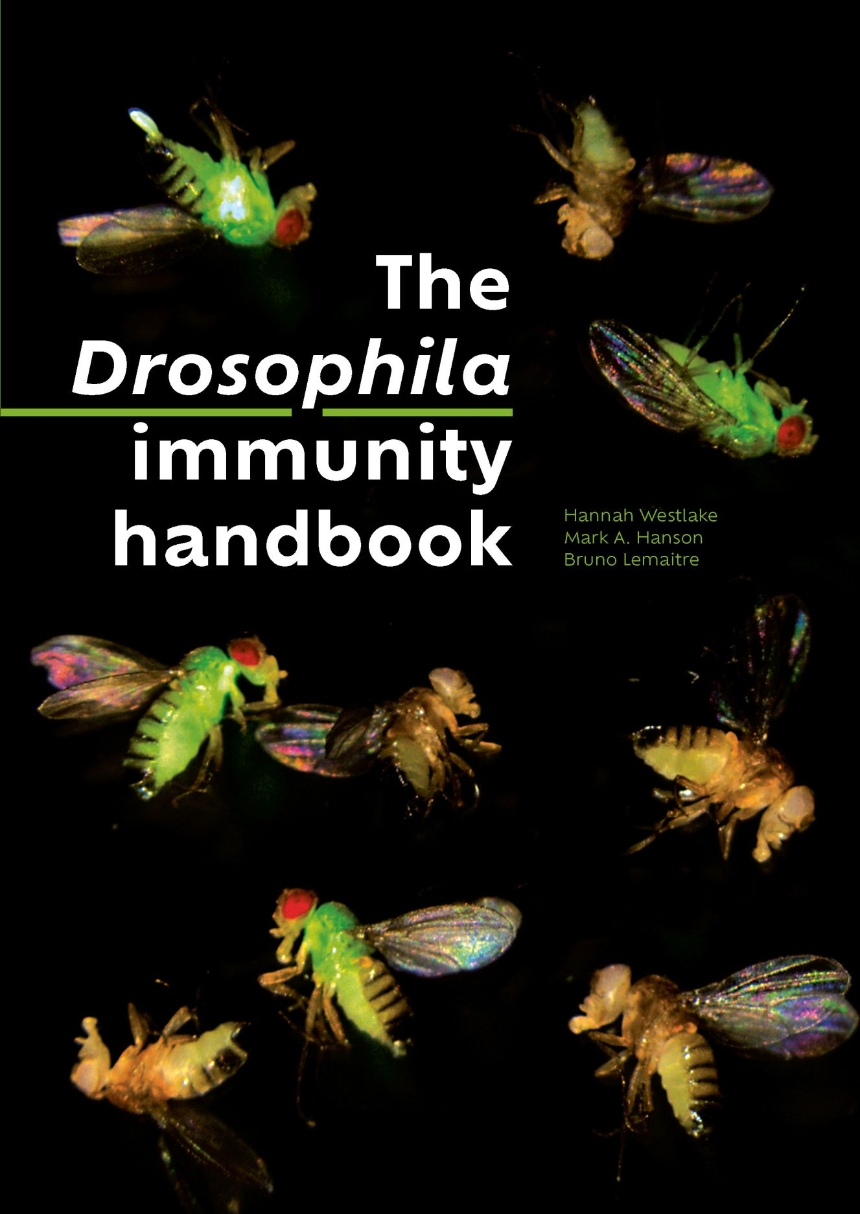Distributed for EPFL Press
Drosophila Immunity Handbook
Explores the genetics of Drosophila, or fruit flies, to further the study of immunity.
Animals possess efficient mechanisms for detecting and neutralizing infection. The application of Drosophila genetics, or the genetics of fruit flies, to the study of these mechanisms has generated insights into insect immunity and uncovered general principles of animal host defense. Although it is difficult to summarize the sheer number of studies published on Drosophila immunity in recent years, the Drosophila Immunity Handbook aims to provide an overview of recent research trends, challenges, and discoveries in immunity through the lens of Drosophila. This overview introduces scientists to the sophisticated fly immune system, highlights exciting recent findings in the field, and pushes new horizons of research by contextualizing existing research and discovering exciting avenues to explore.
These studies have shown that Drosophila have multiple defense “modules” that can be deployed in a coordinated response against distinct pathogens, using physical barriers such as epithelia and chitin, production of reactive oxygen species, antimicrobial factors, blood clotting, the melanization reaction, and complex cellular responses. Metabolic reprogramming also fuels the immune system and effectively combats pathogens, as do symbiont-mediated immunity, disease tolerance mechanisms, and behavioral immunity. The research presented here reveals broader roles of the immune system beyond infection, notably in disease pathologies such as neurodegeneration or cancer. This remarkable animal model has ultimately given us a better understanding of the multiple roles of the immune system at the organismal level.
Animals possess efficient mechanisms for detecting and neutralizing infection. The application of Drosophila genetics, or the genetics of fruit flies, to the study of these mechanisms has generated insights into insect immunity and uncovered general principles of animal host defense. Although it is difficult to summarize the sheer number of studies published on Drosophila immunity in recent years, the Drosophila Immunity Handbook aims to provide an overview of recent research trends, challenges, and discoveries in immunity through the lens of Drosophila. This overview introduces scientists to the sophisticated fly immune system, highlights exciting recent findings in the field, and pushes new horizons of research by contextualizing existing research and discovering exciting avenues to explore.
These studies have shown that Drosophila have multiple defense “modules” that can be deployed in a coordinated response against distinct pathogens, using physical barriers such as epithelia and chitin, production of reactive oxygen species, antimicrobial factors, blood clotting, the melanization reaction, and complex cellular responses. Metabolic reprogramming also fuels the immune system and effectively combats pathogens, as do symbiont-mediated immunity, disease tolerance mechanisms, and behavioral immunity. The research presented here reveals broader roles of the immune system beyond infection, notably in disease pathologies such as neurodegeneration or cancer. This remarkable animal model has ultimately given us a better understanding of the multiple roles of the immune system at the organismal level.
Table of Contents
1. General introduction: Concepts
2. Ecological context of Drosophila and its microbiota
3. The antiviral response
4. The systemic antimicrobial response
5. Systemic immunity: Effectors
6. Systemic immunity: Melanization
7. Systemic wound and stress responses
8. Systemic infection: Tolerance mechanisms
9. Systemic immunity: Cellular response
10. Gut and Epithelial Immunity
11. Sex and Immunity
12. Immunity in Disease
13. Behavioral immunity
14. Evolution of the immune syste
15. Conclusions
2. Ecological context of Drosophila and its microbiota
3. The antiviral response
4. The systemic antimicrobial response
5. Systemic immunity: Effectors
6. Systemic immunity: Melanization
7. Systemic wound and stress responses
8. Systemic infection: Tolerance mechanisms
9. Systemic immunity: Cellular response
10. Gut and Epithelial Immunity
11. Sex and Immunity
12. Immunity in Disease
13. Behavioral immunity
14. Evolution of the immune syste
15. Conclusions
